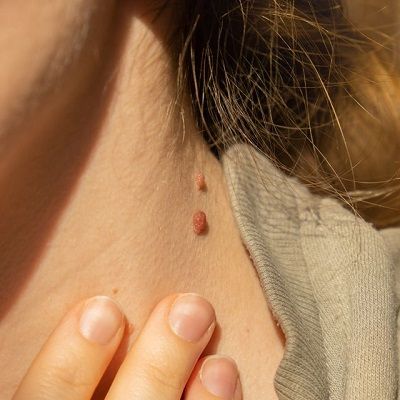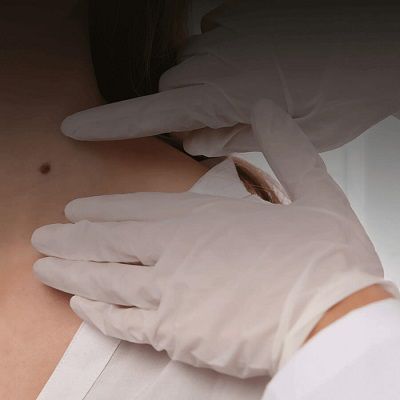
What are Skin Tags?
Skin tags are small, non-cancerous benign skin growths that typically hang off the skin. They are usually brown, or skin in color and do not cause any harm to the human body. It negatively alters the overall look of the skin so people look for its solution. Skin tags usually appear in those areas where there is skin-to-skin friction (creases and folds) or where the clothes, especially nylon or spandex, come in contact with the skin. No matter what the cause is, they can be removed. Common areas where they occur are the neck, upper chest, underarms, groin, eyelids, and popliteal fossa. Skin Tags Removal sticks out the skin so they can be identified simply by looking at them.
Skin Tags vs Warts:
Never confuse skin tags with warts because they are two different conditions. Skin tags are smooth, knobby, and non-contagious while warts are hard, raised, or flat. Warts can be painful sometimes but skin tags are never. People opt for skin tag removal treatments only for aesthetic and cosmetic purposes.
Skin Tag Removal:
People don’t consider skin tags aesthetically pleasing so they look for the procedures to remove them. If you have them and want to get rid of them then there are solutions available. You can use counter products or undergo cosmetic treatments to overcome this problem but before choosing any treatment you have to make sure that you are suitable for that particular treatment. Contact a dermatologist, he/she will help you choose the best option.
Over-the-counter products:
Skin tags can be eliminated by over-the-counter products but they are not very effective and safe to use. Avoid using any of them without consulting a skin specialist. Use it only if your doctor has recommended it. Apply the product to the affected area until the tag is completely removed.
In-office procedures:
Over-the-counter products deliver temporary results so cosmetic procedures are preferable. There are a variety of in-office procedures by which you can completely and permanently remove skin tags from the skin. These treatments are simple, short, and easy to perform and all of them are done in a doctor’s office under local anesthesia. You can choose any of the following tag removal options,
- Excision – a scalpel or blade is used to cut off the tag
- Cryosurgery –Liquid nitrogen is sprayed on the tag that destroys excess skin cells. 2-3 sessions are required to get the desired results
- Ligation – a band is tied around the base of the skin tag to stop its blood supply. Due to the lack of blood supply, after some days the tag will fall on its own
- Laser treatment – by using a handheld device, highly focused laser beams are stroked on the skin tag. Most dermatologists prefer Laser for skin tag removal because it removes dozens of skin tags in just one session without causing any pain.
Are the Results Immediate?
The dermatologist can use one of the above-mentioned techniques during skin tag removal. The time required for the results to appear is highly dependent on these techniques. For example, the results of laser skin tag removal treatment require 3 to 4 months to become visible while the results of excision appear immediately after the procedure. The best thing about all of them is that their effects last for years.
What to do after Skin Tag Removal?
For some days after the treatment, the patient experiences some redness, swelling, and soreness at the treatment site. If you see them don’t panic because it is completely normal and they fade in 4-5 days. You can use cold compressors to minimize them but before using them, inform the doctor. Avoid scratching or exfoliating the treatment site because this act could leave a permanent scar behind. Use sunscreen with SPF 40 or above while going out during the day.
Skin Tag Removal Cost:
The Cost of Skin Tags varies depending on the method used, the total number of skin tags, the location of the clinic, and the expertise of the physician you choose. To know the exact cost of your skin tag removal treatment you have to meet our expert.











